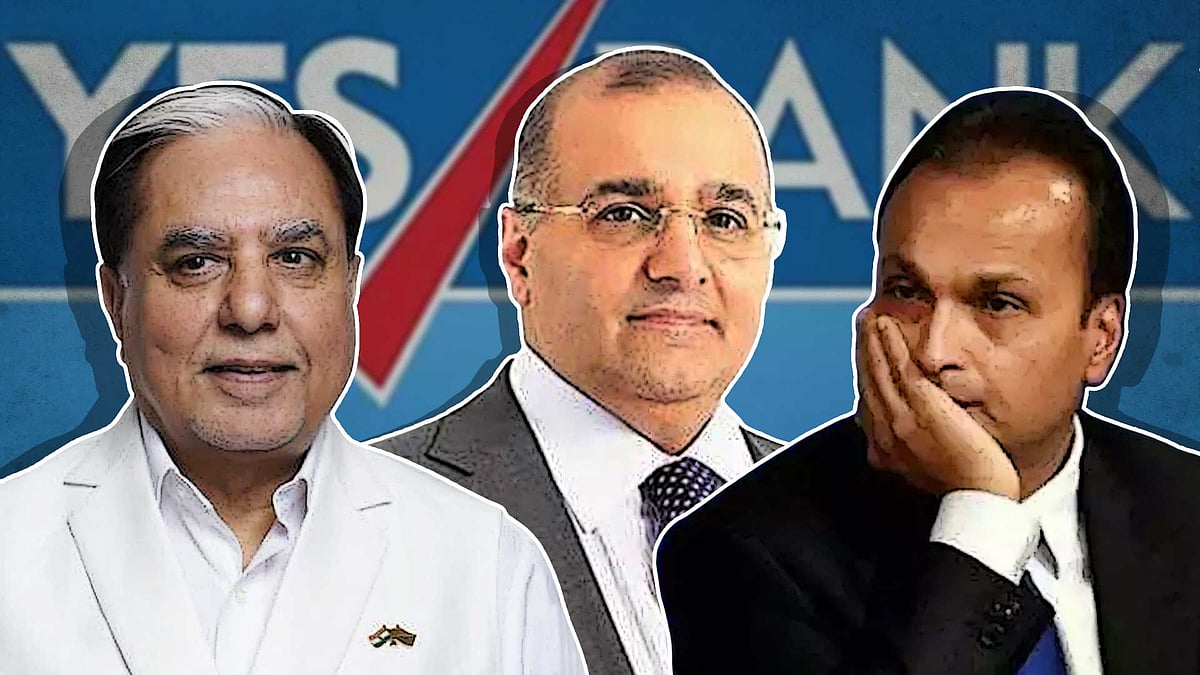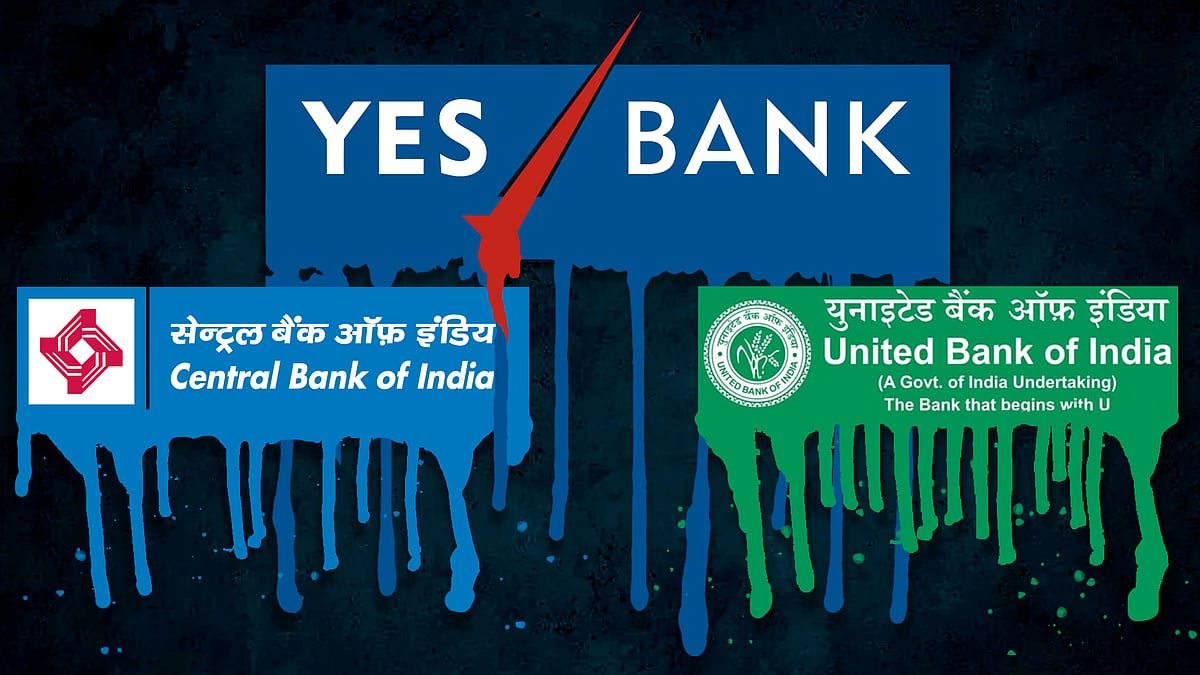The six unseen effects of the Yes Bank fiasco
They might not be obvious, but they may be more dangerous than the obvious effects.
In economics, there are seen effects and then there are unseen effects. And more often than not, the unseen effects — which are not so obvious, which explains why they’re called unseen — turn out to be more dangerous than the seen ones.
Take the case of Yes Bank. The Reserve Bank of India (RBI) has put a moratorium on the withdrawal of deposits from the bank. The limit has been set at Rs 50,000 per depositor.
The seen effect of this is that depositors who have more than Rs 50,000 in the bank cannot withdraw that money currently. People who have issued cheques on Yes Bank accounts are facing problems. People who have EMIs to be paid out of Yes Bank accounts have experienced some trouble. Also, the board of the bank has been superseded and the RBI, along with an administrator, are trying to do what they can in order to rescue the bank and keep it going. The State Bank of India is coming in as an investor. So, to that extent, losses are being socialised. These are the seen effects of the Yes Bank fiasco.
Nevertheless, there are unseen effects of this moratorium as well. What are they? Let’s take a look at them pointwise.
1) By limiting deposit withdrawals at Yes Bank, the RBI has ended up creating an impression in the minds of people that private banks are unsafe. Despite the fact that many public sector banks have been in a bigger mess than Yes Bank, deposit withdrawal has never been limited in their cases. This has created an illusion of safety for public sector banks.
2) When the moratorium on deposit withdrawals from Yes Bank is lifted, there will be a run on the bank. People will try and withdraw their deposits and move them to other banks. If the bank is able to satisfy deposit withdrawals for the first few days, this run is likely to subside. Hence, it is important that the bank have a line of credit ready from the RBI to satisfy the deposit withdrawals.
The administrator of Yes Bank, Prashant Kumar, said the moratorium on Yes Bank is likely to be lifted this week. That being the case, the question is: Why was the moratorium put in the first place? If the moratorium ends up being as short as this, what was the need for it in the first place?
Also, the nation needs to know how a bank which had a bad loans rate of just 3.2 percent as of March 31, 2019, ended up in this situation a year later. Clearly, the numbers of the bank weren’t being rightly reported and the auditor was in cahoots with the bank on this. It also needs to be said that the RBI has been caught napping here.
3) Over a period of time, the broader effect of this will be people moving their deposits from private banks (even the good ones) to public sector banks. In fact, this has already started to happen. Between October and December 2019, as the news about Yes Bank not being in good shape rapidly spread, public sector banks attracted much more deposits than their private counterparts.
The total fresh deposits raised by public sector banks during this period stood at Rs 1.65 lakh crore against Rs 46,680 crore raised by private banks — a change in the trend of the last few years. Between 2015-2016 and 2018-2019, private banks managed to raise deposits worth Rs 18.60 lakh crore. During the same period, public sector banks managed to raise deposits worth Rs 14.90 lakh crore, or a little over four-fifth of what private banks managed.
4) In the months to come, public sector banks will end up raising more deposits than private banks. That will be one unseen effect of the moratorium of Yes Bank. There will be other effects because of this unseen effect. First and foremost, in order to attract depositors, private banks will have to offer higher interest rates on their deposits. This will mean that they will have to charge higher interest rates on their loans as well.
5) Also, in the last few years, private banks have lent out much more money than their public sector counterparts. Between 2015-16 and 2018-19, private banks have made loans worth Rs 17.87 lakh crore against Rs 9.93 lakh crore given out by public sector banks. The lending by public sector banks amounts to around 55 percent of that of private banks.
Interestingly, in 2019-20 (April to December), private banks lent Rs 2.29 lakh crore. The overall lending by public sector banks actually contracted by Rs 25,530 crore during this period. The point being that in the recent past, private banks have carried out a bulk of the lending. Public sector banks have been reluctant lenders under the pressure of a huge amount of bad loans which stood at Rs 8.95 lakh crore as of March 2018 and Rs 7.89 lakh crore as of March 2019.
This means that in time, the loan growth of banks will either continue to be at current levels or even slow down further, as public sector banks end up with more deposits, which they aren’t really in the mood to lend. This will be an unseen effect because of an unseen effect.
6) When a moratorium was placed on the Punjab and Maharashtra Cooperative (PMC) Bank in September 2019, there was a lot of public hungama (for the lack of a better word) around it, especially from people who had a bulk of their savings in the bank.
PMC’s deposits at that point of time were around four percent of the deposits of Yes Bank as of September 2019. But there has been very little hungama in the case of Yes Bank in comparison to PMC. Why? The answer perhaps lies in the fact that PMC Bank is primarily a Mumbai-based bank catering to the Sikh community. Hence, the affected depositors could come together quickly and efficiently. Also, the gurudwaras that had money lying in PMC quickly got involved.
The same cannot be said about Yes Bank. Those who bank with it are spread across the country, which means it’s not easy for them to organise a protest even if they want to. Also, the people who bank with Yes Bank belong to the middle class and upper middle class. The bank was particularly aggressive on corporate salary accounts and even gave a much higher rate of interest on its savings accounts. The chances are that people dealing with Yes Bank have multiple bank accounts, and many haven’t got stuck because of the moratorium.
Also, one school of thought that is emerging on WhatsApp University is that Yes Bank gave a bulk of its loans pre-2014. This isn’t true. In March 2014, the total advances of the bank had stood at Rs 55,633 crore. This grew to Rs 2,41,500 crore as of March 2019. So, the bulk of the bank’s loan book grew after March 2014.
To conclude, currently, everyone seems to be talking about the seen effects of the Yes Bank moratorium. Nevertheless, the unseen effects will have a bigger impact in the days to come. Hence, it is important to talk about them as well.
 Ambani, Wadhawan and Chandra: The three ex-billionaires who said ‘yes’ to bank’s fall
Ambani, Wadhawan and Chandra: The three ex-billionaires who said ‘yes’ to bank’s fall
 Why many public sector banks seem safer than Yes Bank, even though they’re not
Why many public sector banks seem safer than Yes Bank, even though they’re not
